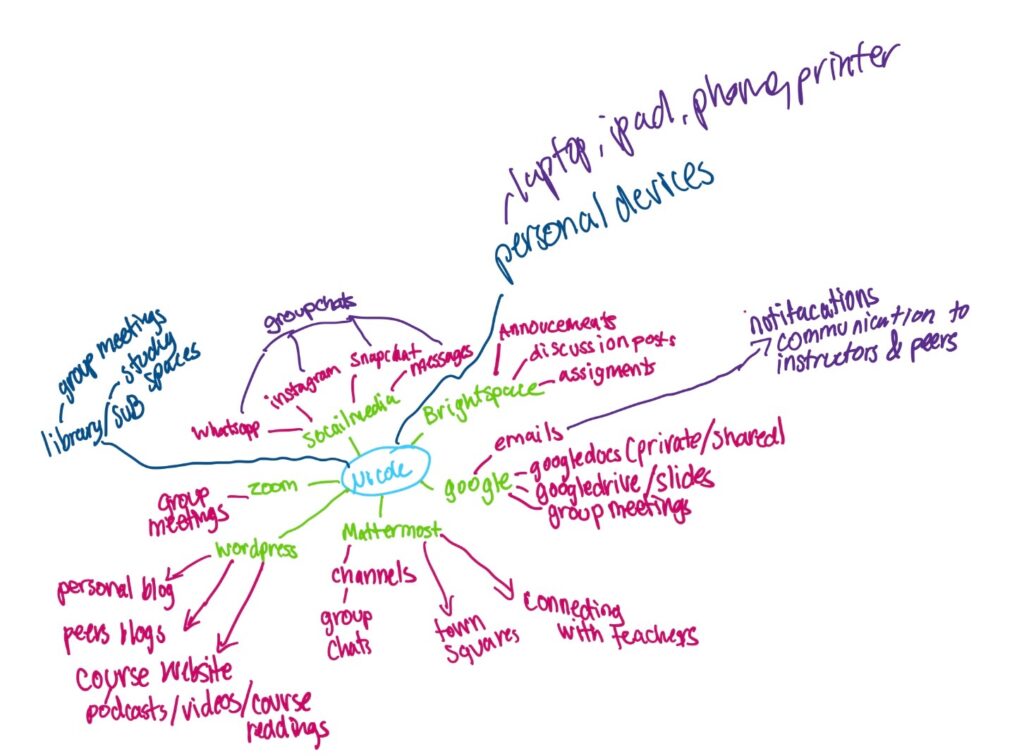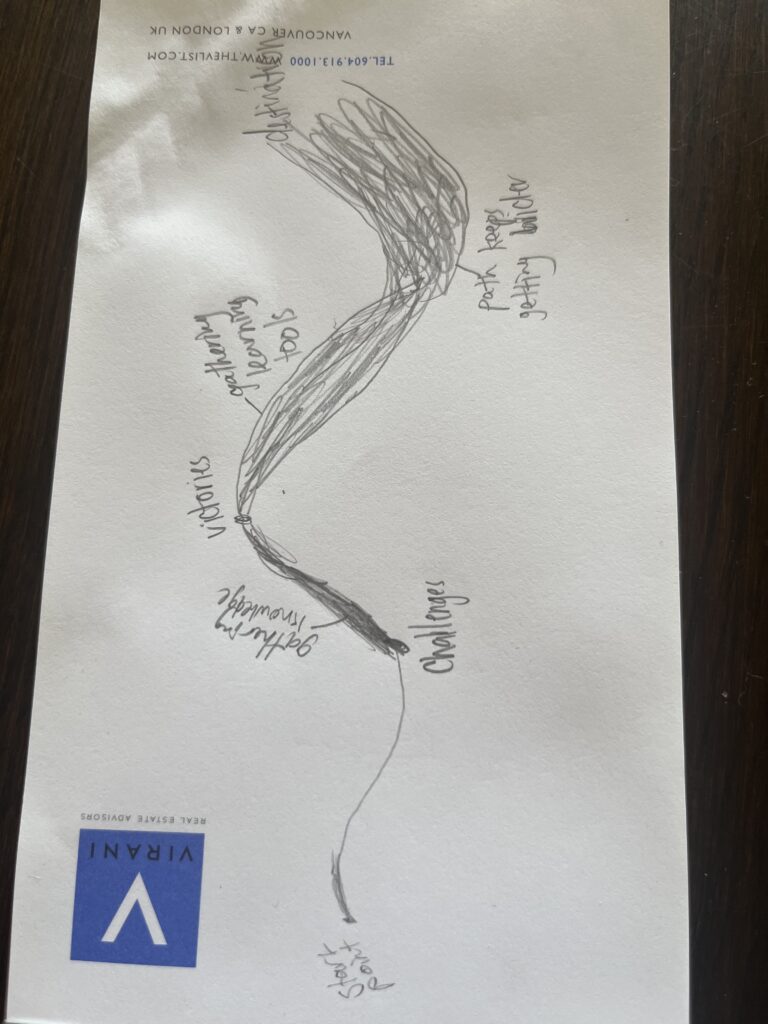Great job on your Interactive Learning Resource, Learning Pod 1! I hope you find my corrections and feedback useful. Thank you for letting me peer-review your paper, I loved learning more about Developing a Growth Mindset.
Learning Pod: # 1
Peers’ Names: Mikaela Curdyk, David Jeong, Mary Pesado, Pim Sgoontanag Kate Ueda
Interactive Learning Resource Topic:Developing a growth mindset
1. Identify components of the Interactive Learning Resource that might be missing (e.g., appropriate outcomes, alignment, interactivity, inclusivity, technology use and rationale, presentation, grammar, spelling, citations, etc.).
- An easy modification- ensure all paragraphs consistently begin indented. The majority of your paragraphs are already, but I would just recommend revising the ones that are missing.
- The introduction states phrases such as: “Children with a growth mindset outperform those with a fixed mindset and are more likely to bounce back from failures” and “Teaching children about a growth mindset will promote an increase in their love of learning, better learning, and sets them up for any challenges in their lifetime”. These quotes provide great context to your Blueprint, however, I recommend reconsidering replacing “children” with a more relevant choice of title to reference the target audience. Some appropriate options of terms for alluding to learners in grades 10-12, include: student/ learner/ person/ humans/ youth/ etc.,
- A minor restructure of your paper by mentioning the age range of the target audience earlier to give the readers an idea of the complexity could be beneficial.
- Correct me if I am wrong, but it would be helpful to establish the number of questions the multiple choice quiz contains.
Here I have listed a few spelling/ grammar suggestions that perhaps you’re group might consider taking a second look at:
Original: A growth mindset can encourage a passion for learning and an ease when facing new challenges.
Recommendation: A growth mindset can encourage a passion for learning and (ease/ relief/ support/ aid) when facing new challenges.
Original: Our target audience for the Interactive Learning resource is grade 10 to 12.
Recommendation: Our target audience for the Interactive Learning resource (is between grades 10 to 12.)
Original: Breakout rooms: Students will discuss their assessments results in groups of 3 and answer the question below:
Recommendation: Breakout rooms: Students will discuss the (results of their assessments) in groups of 3 and answer the question below:
Original: For 7 days, individuals will spend 5-10 minutes a day on up to five things which they are grateful for.
Recommendation: For 7 days, individuals (/ participants) will (be instructed to journal for about ) 5-10 minutes a day (dedicated to reflecting on up to five elements that they are grateful for.) on up to five things (that) they are grateful for.
Original: Final submission will be on Moodle as a blog post format.
Recommendation: (Candidates must submit their) final submission (to the) Moodle (in) a blog post format.
Original: This makes it much easier for students to participate in the learning experience, regardless of their location or access to technology, thus ensuring that all students have equal (opportunities) to learn.
Recommendation: (Regardless of the students’ location or access to technology, this method ensures students’ are granted equal opportunities to participate in the learning experience,)
2. Provide a summary of The Interactive Learning Resource’s strengths and weaknesses. Draw out specific examples from your peers’ work to justify your feedback.
Strength
- The interactive learning resource uses an effective combination of experiential learning and cooperative learning.
- The paper contains valuable details to inform the readers: defining experimental and cooperative learning in your learning design, and how it relates to growth mindset development. I appreciate how the paper states the beneficial components, and learning outcomes from each lesson.
- Well-organized layout and lesson plans with headings and subheadings to ensure the paper flows smoothly, but clearly divides each section. This makes it easy for learners, instructors, and readers to navigate.
- I love the designated sections that explain the learning outcomes, specify the technology used, depict an activity breakdown, and clarify the lesson’s assessment method.
- The rubric under the Summative Assessment chart establishes clear standards, expectations, criteria, and scoring evaluation. Students can refer back to this rubric to stay on track with assignments. This always promotes the learners to remain in touch with self-reflection, make personal connections, and improve critical thinking.
- Great job with text citations!
Weakness
- Rather than focusing so much on journaling, I think it would be beneficial to offer the learners a few options for expressing their understanding (multiple means of expression). For example: in addition to journaling, a video/ audio recording, song/ poem, or drawing that represents elements which they are grateful for.
- The paper reflects all the effort you put into the organization, the structure, and providing information about the growth mindset. My grammar/ spelling corrections could be wrong, but I think your paper would benefit from another proofreader. Sometimes getting a fresh set of eyes to review your writing can be useful, or reading everything out loud helps to notice potential errors.
- I am a bit confused about the setting this lesson will take place in. The paper states “Then students return to the large class setting where they share those ideas from the breakout rooms with each other” so will this lesson occur at home, or in a classroom? If it does in the classroom, will the students be using headphones? Is there a set time, and how will you monitor students’ engagement through online/breakout rooms? I agree that students in high levels of education collaborate better with technology but just confused about when and where these activities take place.
3. Provide general, specific, and practical recommendations to your peers on how to improve their Interactive Learning Resource.
- Great Interactive Learning Resource assignment! Your project provides learners with a very clear outline of each lesson to improve their growth mindset. Students in grades 10-12 tend to get distracted during unsupervised group activities. I would recommend having very strict expectations for the breakout rooms or finding a substitute activity. Providing more explicit instructions for each activity is always beneficial and reduces confusion about expected outcomes. For example, a visual demonstration performing each lesson, identifying time duration, and group size, would help learners grasp instructions better improving their engagement.


Recent Comments